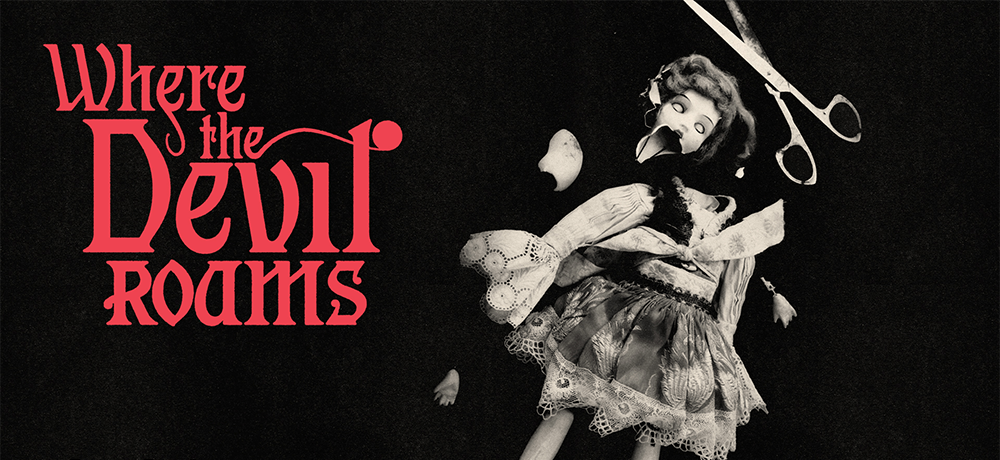


There is something about a carnival. Something mysterious. Maybe even a tad dangerous. In the midst of a humdrum existence, a carnival feels like one of the last places left where magic may still exist. It’s here one day, gone the next. A world unto itself that sets up in new places, inviting us into its arms for one or two nights at a time, before vanishing, taking its magic along with it. It is populated by people living their lives on the edge of society; just close enough for us to see and interact with when they choose, before closing the curtain and retreating to their own little world. Performers who thrill, challenge, and play with their audience before disappearing like ghosts, leaving us behind in the ordinary world.
That mysterious nature has been bottled on film a handful of times. Tod Browning’s Freaks, the HBO Carnivale series, and now, in the Adams Family’s Where the Devil Roams. It’s a film that fully understands the boundary between the carnival and the rest of the world, embracing the strange and imbuing itself with that magical sense of unease.
The story centers on a family who makes its home as members of a traveling carnival in the 1930s. Maggie (Toby Poser), Seven (John Adams) and Eve (Zelda Adams) spend their working hours running games at the carnival and performing a musical act. Their downtime is spent driving through the countryside, viciously murdering people who cross them. They’re an interesting bunch; Maggie is warm and kind to those in her circle, but will slit a stranger’s throat without thinking twice. Seven is educated, having spent his former life as a country doctor, but memories of his time fighting in the first World War have left him traumatized and unable to stand the sight of even a drop of blood. Their daughter Eve is mute; except when she is singing. The trio is wholly devoted to each other and to the life that they have built, out here on the edge.
The carnival is populated by numerous intriguing and mystifying characters, including a performer calling himself Mr. Tips. At the end of his set each evening, he enraptures and horrifies onlookers by slicing off his own fingers with a pair of sharp scissors. As Eve learns one evening upon venturing into his tent, this is more than a mere illusion. Mr. Tips has made a deal and harnessed a horrible power in order to perform this dark miracle and he knows that his power rests on a knife’s edge. As he cryptically tells Eve, “When you dance with the devil, you gotta make it quick.”
Eventually, a tragic turn of events unfolds and the temptation to act on this forbidden knowledge is just too great. Eve makes her own deal with the darkness in order to set things right. But of course, deals with the devil are never as simple as they seem, and you always wind up with more than you bargained for.
As a narrative, the film is a little on the flimsy side. There is little in the way of character development and the plot and themes are largely surface-level. What you see is what you get. The story is horrifying one moment and darkly funny the next, making the tone a little difficult to pin down. But Where the Devil Roams still manages to carry its own brand of magic. It harnesses the mysterious nature of the carnival itself. The story exists on the fringe; in the space between.
A lot of this liminal feeling comes from the look of the film, which is a captivating blend of the old and the new. The Depression era of Where the Devil Roams takes elements of the 1930s and mixes them with more modern notes. We have period-appropriate clothing, but also have carnival costuming that evokes the work of Tim Burton, Rob Zombie and Kat Robichaud's Misfit Cabaret. Old cars and antique furniture are right at home being placed next to a more modern reimagining of a circus aesthetic that leans into black and white stripes, punk rock body art and menacing make up. This melding fantastically conveys a believable setting, but also a mysterious subspace that lies within the boundaries of the carnival itself. Within our realistic period surroundings, we still have a bit of magic and otherworldliness luring us in.
The music further adds to this sense of otherworldliness. Though not diegetic in nature the soundtrack incorporates modern rock songs written and performed by the Adams clan, as they did in Hellbender. Again, this blend of the past and the present creates something unique on screen. The music feels as much a character as any of the people we see allowing the film to exist in between time and space.
Though not without its flaws, Where the Devil Roams marks another fascinating entry into the Adams oeuvre. It plays with mystery and magic in a way that really seems to harness the spirit of the unknown. The setting (both the carnival and the Depression) is something that is transient by nature. The carnival flits from town to town and the Depression era is a time where it seemed that people could be easily lost and forgotten. Both of these elements come together to tell a story that takes place in a liminal space where anything seems possible.
Movie Score: 3.5/5